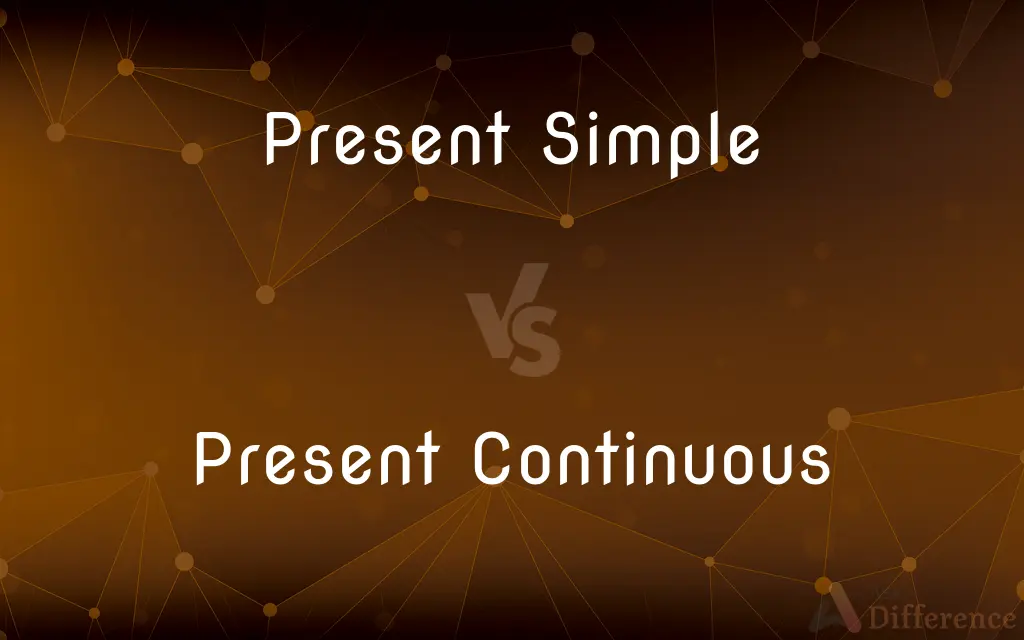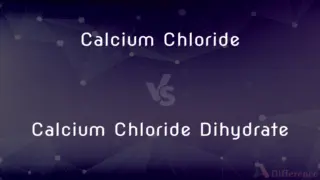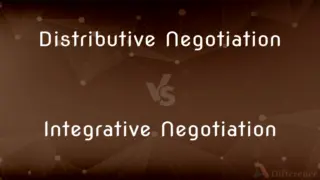Present Simple vs. Present Continuous — What's the Difference?
By Tayyaba Rehman — Published on December 18, 2023
Present Simple expresses habitual actions or general truths. Present Continuous describes ongoing actions or current situations.

Difference Between Present Simple and Present Continuous
Table of Contents
ADVERTISEMENT
Key Differences
The Present Simple tense, as its name suggests, is used to indicate simple present actions or situations. It often denotes habits, general truths, or repeated events. On the other hand, the Present Continuous tense is used to describe actions or situations that are currently ongoing, temporary, or happening right now.
When using the Present Simple, the structure is quite straightforward, generally using the base form of the verb (with an 's' added for he/she/it). Examples include "She reads books" or "Birds fly." In contrast, the Present Continuous is formed using the verb 'to be' in the present (am, is, are) followed by the base verb with an 'ing' ending. Such as "She is reading a book" or "The birds are flying south."
Another difference between the Present Simple and Present Continuous lies in their adverbial companions. With the Present Simple, you'll often find adverbs of frequency like always, often, sometimes, rarely, etc. For example, "He always eats breakfast at 7 am." The Present Continuous, on the other hand, might be accompanied by words like now, currently, or at the moment, e.g., "He is eating breakfast now."
In summary, the Present Simple is all about generalities, habits, and truths. The Present Continuous focuses on the here and now, what's ongoing, or temporary situations.
Comparison Chart
Usage
Describes habits or general truths.
Indicates ongoing or current actions.
ADVERTISEMENT
Form
Base verb (+s for he/she/it).
Am/is/are + verb + ing.
Examples
"She likes coffee."
"She is drinking coffee now."
Common Adverbials
Always, often, sometimes, never.
Now, currently, at the moment.
Duration
Undefined or permanent.
Temporary or at the current moment.
Compare with Definitions
Present Simple
Expresses feelings or states of being.
I love chocolate.
Present Continuous
Indicates temporary situations.
He is staying at a hotel.
Present Simple
Shows permanent situations.
She lives in New York.
Present Continuous
Describes actions happening right now.
She is watching TV.
Present Simple
Used with scheduled events.
The train leaves at 5 pm.
Present Continuous
Expresses changing or developing situations.
The climate is getting warmer.
Present Simple
Describes regular habits.
I visit my grandmother every Sunday.
Present Continuous
Shows repeated or annoying actions (with 'always').
She is always forgetting her keys.
Present Simple
Indicates general truths or facts.
The sun rises in the east.
Present Continuous
Used for future arrangements.
I am meeting him tomorrow.
Common Curiosities
Can I use the Present Simple for future events?
Yes, when referring to scheduled or fixed events like timetables.
When do I use the Present Simple?
Use it for habits, general truths, permanent situations, feelings, and scheduled events.
How is the Present Continuous formed?
Subject + am/is/are + verb + ing. E.g., "She is reading."
When is the Present Continuous used?
For actions happening now, temporary situations, changing situations, future plans, and annoying habits with 'always'.
Can I use "always" with the Present Continuous?
Yes, to express a repeated or annoying action, e.g., "He is always losing his keys."
Can I use "now" with both tenses?
While "now" is mainly used with Present Continuous, in some contexts, it can be used with Present Simple for emphasis.
What's a common mistake with the Present Continuous?
Forgetting to use the helping verb "am/is/are," e.g., "She reading" instead of "She is reading."
What's the structure for positive sentences in Present Simple?
Subject + verb (+s for he/she/it) + object. E.g., "She reads."
Is "currently" used with Present Simple or Present Continuous?
It's used with the Present Continuous, e.g., "She is currently working."
Why do some verbs not use the Present Continuous?
Some "state verbs" like "know" or "believe" aren't usually used in the continuous form.
Are there any verbs that are exceptions in the Present Simple?
Yes, "be," "have," and "do" have irregular forms in the Present Simple.
Can the Present Continuous be used for future actions?
Yes, for planned or arranged future actions, e.g., "I am seeing her tomorrow."
What are some common adverbs with Present Simple?
Always, often, sometimes, never, etc.
Why does the verb change in the 3rd person singular in Present Simple?
English grammar rules add an "s" to most verbs in the 3rd person singular.
Do all verbs have an "ing" form for Present Continuous?
Most verbs do, but remember the spelling changes for some verbs, like "run" becoming "running."
Share Your Discovery

Previous Comparison
Calcium Chloride vs. Calcium Chloride Dihydrate
Next Comparison
Distributive Negotiation vs. Integrative NegotiationAuthor Spotlight
Written by
Tayyaba RehmanTayyaba Rehman is a distinguished writer, currently serving as a primary contributor to askdifference.com. As a researcher in semantics and etymology, Tayyaba's passion for the complexity of languages and their distinctions has found a perfect home on the platform. Tayyaba delves into the intricacies of language, distinguishing between commonly confused words and phrases, thereby providing clarity for readers worldwide.
















































